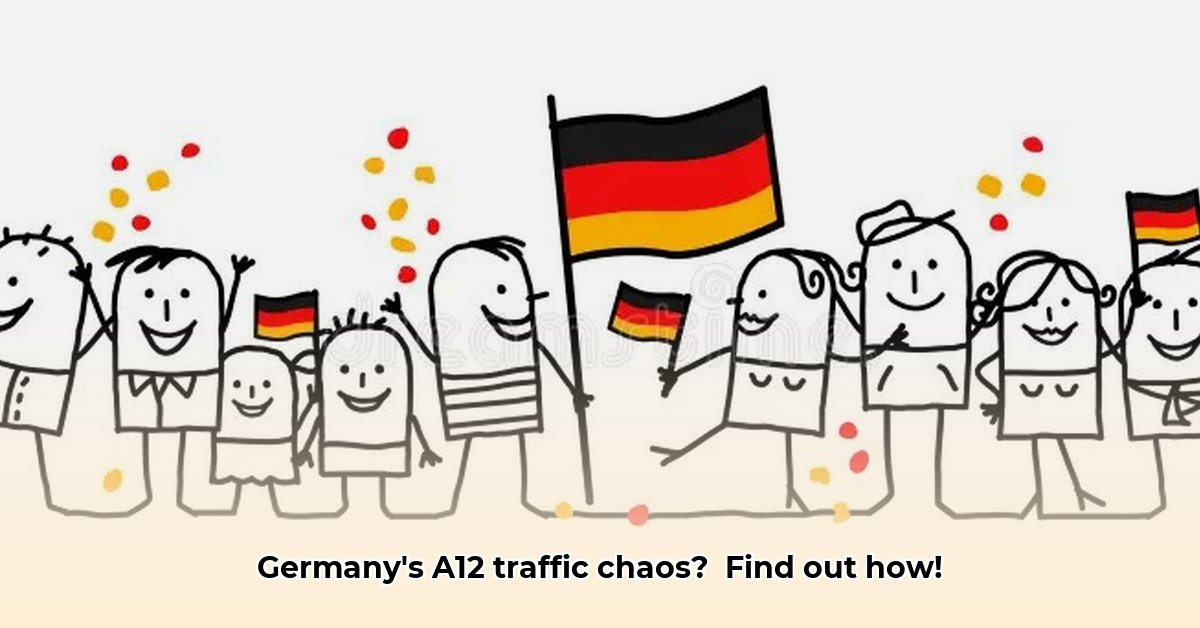
It’s a familiar story: a German public holiday arrives, and the A12 motorway, a crucial link between Germany and the Netherlands, transforms into a massive traffic jam. This surge in vehicles, particularly noticeable around holidays like Sacramentsdag (Corpus Christi), causes significant delays, especially near Arnhem. These disruptions, though often temporary, highlight the urgent need for better cross-border traffic management. This article explores the causes of this predictable congestion and proposes actionable solutions.
The A12: A Holiday Bottleneck
The A12 is a major thoroughfare connecting two countries. German public holidays trigger a significant increase in traffic volume, overwhelming the road's capacity and leading to considerable congestion. The ANWB (Royal Dutch Touring Club) frequently reports these extensive traffic jams, confirming drivers' experiences. However, anecdotal evidence isn’t enough; we need quantitative data. Precise figures on increased traffic volume, delay durations, and the economic impact of these disruptions are currently lacking. This data deficiency hinders the implementation of targeted solutions. Real-time traffic data could allow for predictive modelling, enabling proactive congestion management and potential rerouting.
Making Sense of the Numbers: Data Gaps and Opportunities
Our understanding of the problem is currently qualitative: German public holidays cause significant A12 congestion. However, we lack the quantitative data necessary for effective solutions. Precise measurements of traffic increases during these holidays, along with a clear understanding of the economic costs of delays, are crucial. This lack of data hampers the development and implementation of targeted solutions. Real-time data analysis, combined with historical traffic patterns, could provide valuable insights into traffic flows and congestion hotspots. This requires collaboration between Dutch and German authorities, alongside organisations like the ANWB, to collect and share relevant traffic data. Wouldn't it be beneficial to have a system that predicts congestion hotspots and suggests alternative routes in advance?
Practical Solutions: A Multi-Faceted Approach
Addressing this problem demands a collaborative effort between stakeholders and a blend of short-term and long-term strategies. Let's consider a roadmap for smoother journeys:
Short-Term Solutions (0-1 Years):
- Enhanced Information Sharing: The ANWB and similar organisations should provide more comprehensive and timely traffic information, incorporating German holiday calendars into their alerts. This improved dissemination of information will allow drivers to make more informed decisions.
- Cross-Border Cooperation: Dutch and German authorities must enhance communication related to anticipated holiday travel. Sharing information about expected traffic volumes and potential congestion areas helps manage expectations and enables proactive travel planning.
- Optimised Logistics: Logistics companies should adopt route optimisation software that adapts to real-time traffic conditions, minimising delays in goods transport. This would improve efficiency and reduce costs.
- Driver Awareness Campaigns: Educating motorists about using real-time traffic apps and planning their journeys accordingly, including consideration of German public holidays, is essential. Improved driver awareness can significantly reduce congestion.
Long-Term Solutions (3-5 Years):
- Advanced Predictive Modelling: The ANWB and similar organisations should invest in sophisticated predictive modelling, factoring in cross-border traffic patterns and also exploring alternative routes. This advanced modelling could drastically improve traffic predictions and management.
- Infrastructure Improvements: Dutch and German governments must consider infrastructure improvements to relieve bottlenecks on parts of the A12. This could involve expanding road capacity or enhancing traffic management systems. The feasibility of adjustments to the holiday calendar to better distribute holiday travel should also be explored.
- Alternative Transport Modes: Logistics companies should assess the viability and cost-effectiveness of rail or inland waterway transport for goods, thus reducing dependence on road transport. This shift towards alternative transport modes can lessen congestion on the A12.
The Path Forward: Collaborative Action
A12 congestion during German public holidays is a solvable problem. By combining effective data collection, stronger cross-border collaboration, and investment in intelligent technologies, we can significantly mitigate this issue. The key is concerted collaboration among governments, organisations, and drivers to make the A12 a safer and less frustrating route for all. Isn't a smoother, more efficient cross-border journey something we can all agree on?